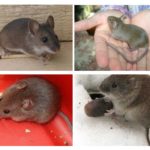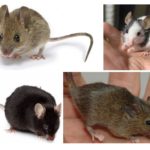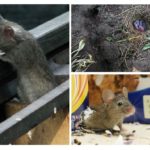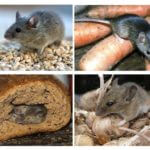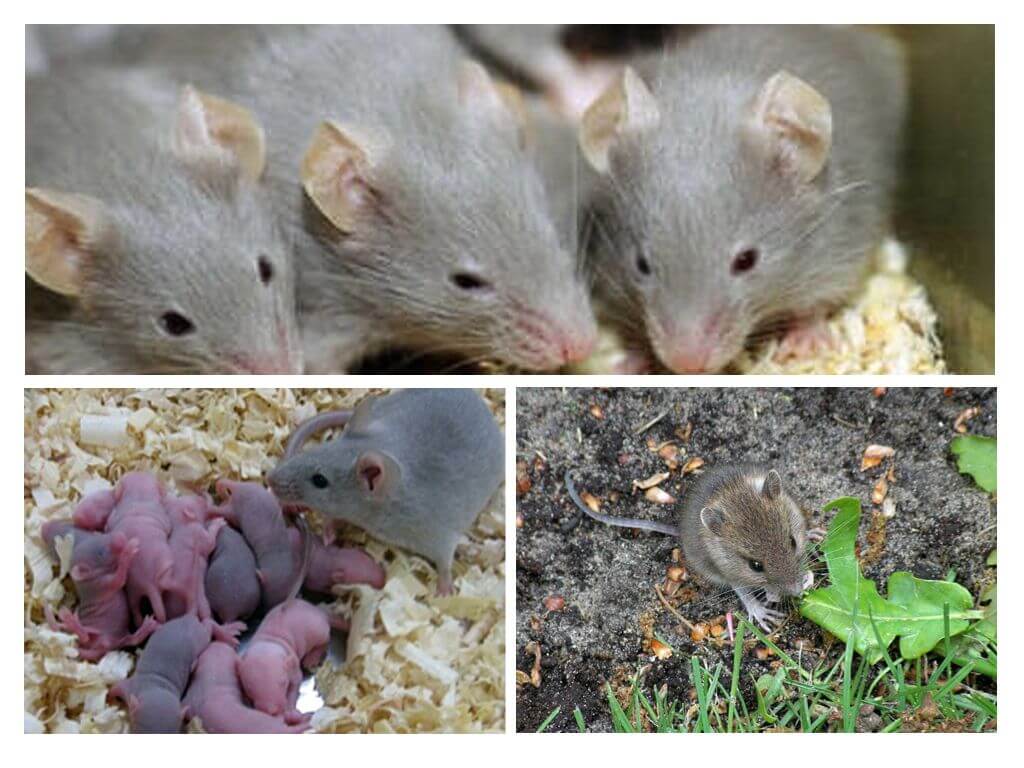House mice
Content
- House mouse
- Types of mice
- House mouse life
- Nutrition and breeding of rodents
- Harm from mice
House mouse - a special type of rodent, which is known for its close coexistence with humans. A small gray little animal can be found in the garden, in the dacha plot, in the garden, outbuildings, barns, chicken coops, even in your own house, apartment. An annoying creature eats food supplies, spoils interior items, nibbles wiring, makes many other dirty tricks to humans.
Distinctive appearance
House mice belong to one of the most numerous groups of mammals on earth - rodents. About 80 are known in the world. types of mice. The most common are house mice. Externally, the animal is familiar to adults, small children. The photo of house mice is located below.
- The length of the body of an adult individual is from 6 to 10 cm. In some cases it can reach 15 cm. How much a house mouse weighs depends on the conditions of existence and nutritional value. The weight of a wild mouse ranges from 12 to 30 g. Sexual dimorphism is noted weakly. It is difficult to distinguish the male from the female in size.
- The tail is thin, with horny scales. Tail length equals 60% of body length.
- Rounded little ears are widely located relative to each other.
- Round eyes, oblong muzzle.
- House mice are characterized by different color. The upper torso is dark. It happens gray, brown, black. The abdomen is always a tone lighter. Ash gray, white, and red villi are present.
Interesting!
House mice quietly live in cages. Breeders brought decorative animals of yellow, blue, black, red, white. Below is the decorative house mouse in the photo.
Species
Brownies mice live everywhere. Contributes to this high adaptive capacity. The animals are relatively well tolerated cold, heat, adapt to any conditions of existence. Provides survivability close proximity to the person - a minimum of enemies, a large amount of food. A typical representative of the mouse can be found on the street, in the room. Dwells in garages.
House mice are the most common experimental specimens in laboratories. For many years of work, breeders have specially or unintentionally bred many different subtypes of house mice. But a few are officially allocated.
House mouse classification:
- musculus - gained distribution in Poland, Northern, Eastern Europe, parts of Russia;
- bactrianus - an interesting type of domestic mice found in Asia;
- domesticus - heat-loving species found in southern Europe, America, Africa, Australia;
- castaneus is another representative of Asia, only the south-eastern part of it.
For a long time there was another type of domestic mice - M.m.molossinus. Rodents are common in Japan. However, later scientists saidthat this species cannot be classified as a separate type, since they received animals by crossing M.m.musculus, M.m.castaneus.
Living environment in the wild
House mouse loves heat, does not tolerate high humidity. The animals do not live in the Far North, the expanses of Antarctica, high in the mountains. The rest of the terrain was examined up and down.
House mouse loves to settle near the houses of people in the warm season. With the onset of cold weather, it moves to the human abode, barns, warehouses, granaries, and economic extensions. Seasonal migration is 3-5 km.
Mass relocation occurs under adverse climatic conditions. Contributes to the process of migration of fire, flood, drought, premature frosts. Some of the house mice remain to winter in the fields in haystacks, forest belts, and ricks. With the onset of spring, leaves houses, apartments, moves to natural places of residence.
On a note!
In a desert area, where the air temperature is always comfortable for house mice, there is no mass relocation to human houses.Rodents live year-round in oases, keep places with the presence of ponds. In the rocky terrain they live in walnut orchards, causing considerable damage to the owners.
Private accommodation
The house mouse in most cases settles on the soft, not prone to drying out soil. To make moves more convenient, the walls of the tunnels did not collapse. Construct a burrow of 100 cm in length. An entrance is necessarily present, 2 emergency exits. The camera for the nest is built at a distance of 30 cm from the surface of the earth. In winter, go deeper - up to 65 cm in depth. The nest diameter is about 25 cm. House mice prepare a soft bed of twigs, leaves, moss, all convenient materials.
Often house mice populate already completed burrows of voles, moles, hamsters, and other rodents. Or build a nest under the stones, in the natural land depressions, under the embankment of leaves.
In human habitation house mice place their nests in well-protected, secluded places. Prefer to settle:
- under the floor;
- between the walls;
- in the attic;
- under garbage cans;
- in places of accumulation of food waste;
- in the vegetable store.
For the construction of the nest used various available, suitable materials: straw, pieces of cloth, twigs, hair, feathers, foam, foam.
Interesting!
In the nest, the house mouse is always trying to keep it clean. If parasites started, housing got wet, it just became uncomfortable, they throw without remorse of conscience, construct a new nest.
Lifestyle
In the wild living environment, house mice activate their activity in the dark. During the day they hide in burrows for several reasons - they do not like bright light, they are afraid of predators. In a person's housing they adapt to the way people live. Creep out of the shelter with complete silence.
If there is constantly artificial lighting in the house, house mice are active around the clock with regular breaks. About 20 periods of wakefulness of an average duration of 30 minutes occur per day. House mice move along the studied routes. Leave behind feces, urine, food crumbs.
House mice are great run, quickly react to rustling, movement. The animals can reach speeds of up to 13 km / h. Climb trees, smooth surfaces, jump, freely behave in the water.
Each has its own territory. The mouse does not go far from the nest, it hunts in the designated area. The male is entitled to 1200 m², the females - 900 m².In the period of strong reproduction, house mice live in families, colonies. There is a ringleader - a male, several dominant females.
Interesting!
The head of the family aggressively behaves in relation to young males, between females skirmishes for the championship rarely occur. Together they raise offspring, take care of good nutrition. Weak individuals try not to appear in the eyes of the leader, they start to active when the “leader” falls asleep. Grown up mice soon expelled from the family. They create their own hierarchy.
Power Features
On the left tracks on plastic, rubber, wood and other inedible materials, it seems that house mice are omnivores. In nature, the rodent is content with seeds. Mice in food prefer cereals, cereals, legumes. Eats seeds of cultivated plants, wild.
A certain part of the diet is occupied by insects, worms, caterpillars, larvae, carrion. With a shortage of water house mice eat the juicy parts of the plant. A rodent needs about 3 ml of liquid per day. If this rule is not followed, the animal dies from dehydration within 15 days. With an excess of food, rodents make food stocks for a rainy day.Occasionally, birds' nests are ravaged, they eat eggs, small chicks.
In the human house, the diet of mice is expanding significantly. Pests eat all food stocks, any products. And also soap, candles, indoor flowers, glue.
Important!
Mouse structure has its own characteristics. Rodent teeth have unusual properties. Each jaw has incisors that grow daily throughout life. The animals are forced to constantly grind them, otherwise they will not be able to close their mouths. For this purpose, solid inedible materials are gnawed - wood, plastic, foam plastic, brick, rubber and the like.
Breeding features
House mice are characterized by extraordinary fecundity. Under favorable conditions in the house breed year round. In the natural environment, the period lasts the entire period of warm days. It starts in March, ends in November. For the year, the female gives life to 10-14 fruits, in the litter from 3 to 11 mice. After 18 hours, it is ready for fertilization again. Pregnancy lasts an average of 21 days.
Mice are born blind, naked, absolutely helpless. After 2 weeks, they are covered with fur, eyes are opened, at the same time teeth appear.On the 21st day of its existence, they are fully prepared for independent living, driven out of the nest. Fertilization of a young female occurs at the 5th week of life.
Interesting!
Males attract the attention of females by ultrasound. Do not stand on ceremony in marriage games, immediately get down to business. House mice are easily crossed with other subspecies.
Lifespan
Mice have many natural enemies - from a harmless hedgehog to a fox, a wolf, a dog, a cat. The lifespan of mice does not exceed 18 months. In captivity with proper care, food abundance house mice live up to 3 years. In the laboratory during the experiment, the individual lived 5 years.
On a note!
Man not only prolongs the life of rodents, but also shortens it. Applying traps, electric mousetrap, trap cells, poison for mice and other methods of struggle.
The number of rodents is subject to seasonal fluctuations. It is also observed that the population of mice increases every 5 years. At the end of winter, the number of animals is in minimal limits, with the onset of spring, rodents start mating. At the time of plant growth, the number of rodents increases. Until the end of the summer there is a decline.The maximum number of pests observed in the fall. At home, there is no significant fluctuation in the number of mice, the population is able to increase by 3 times.
Harm
House mice with a huge number of them spoil the grain fields. Not so much they bite the grain, how many dig tunnels, form mounds. The stem falls to the ground, the grain is damaged, difficulties arise during harvest.
The main harm from the house pest is the deterioration of food supplies, animal feed. Pests pollute them with feces, urine, leave a lot of bacteria, pathogens.
Undoubted harm bring furniture, decor items, books, clothes. They gnaw wood, plastic, rubber, electrical wiring. For these reasons, the primitive man has tamed a cat that successfully kills rodents.
House mice are carriers of dangerous diseases:
- intestinal infections;
- the plague;
- pseudotuberculosis;
- fever;
- rabies;
- tularemia;
- leptospirosis.
Recently, scientists have announced the possibility of transmission of breast cancer by mice. Diseases spread through feces, urine, saliva, ectoparasites, bites.The person is simply obliged to fight pests on the territory of the plot, his own house.
Benefit
For years, domestic mice are bred as domestic, laboratory specimens. One of the reasons for the mass breeding of rodents in captivity are various experiments. The decoding of the genome of house mice was completed in 2002. Scientists have found that the gene coincides with the human by 80%. On animals, they check the effect of new drugs.
Breeders are constantly experimenting, bringing their pets with the original color - red, yellow, blue, white, spotty. A cute little creature pleases the eye of the owners, not at all like a harmful, dangerous gray creature.
Interesting!
In the course of numerous experiments, we received a “dancing mouse”. Pathology in the brain, a violation of the musculoskeletal system has led to the fact that the animals circle nonstop, being in one place, move in zigzags. In China, about 350 years ago, singing mice were bred. Rodents make cricket-like sounds.
The animals are bred specifically in nurseries for feeding to other animals - snakes, lizards, hedgehogs, cats, other predators.
House mouse - one of the most unique, interesting, unusual creatures. Purposefully destroy the animals is not worth it, if only they were not near the house, not settled in the apartment.

